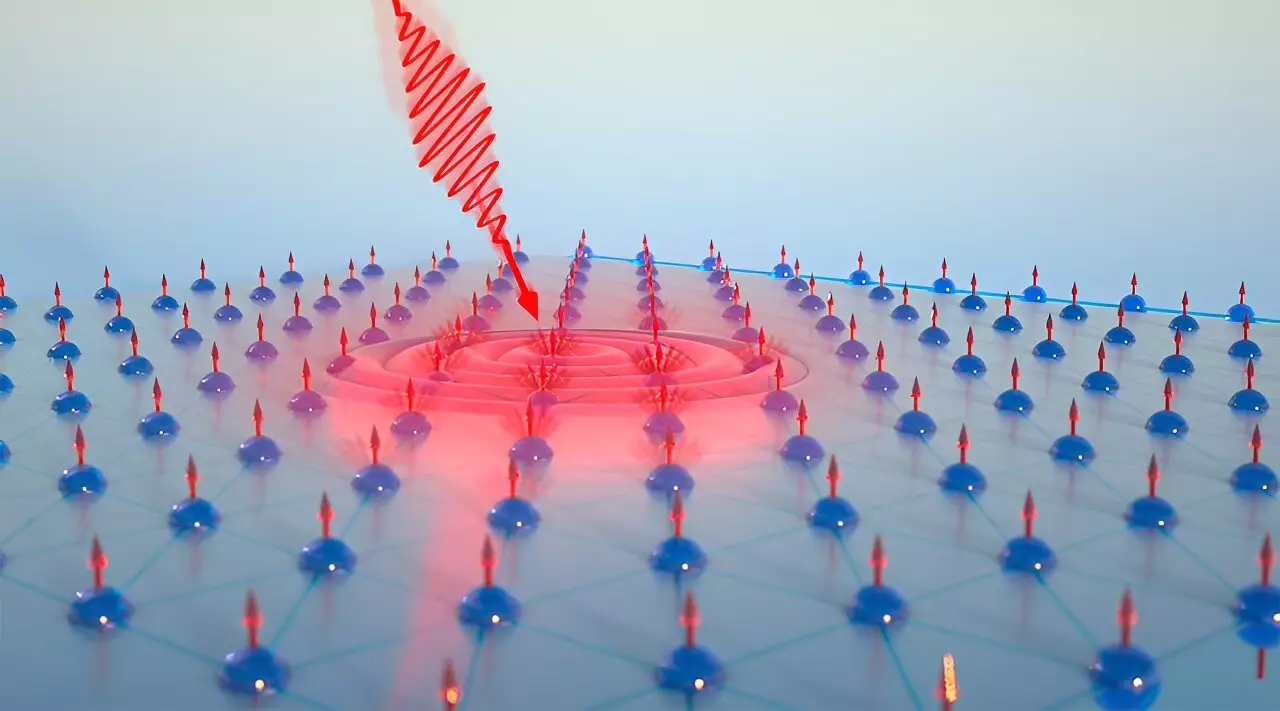In an era where the demand for faster and more energy-efficient data storage solutions continues to escalate, researchers from the University of Chicago Pritzker School of Molecular Engineering (PME) are making notable advances in the field of optical memory. Their innovative work revolves around a unique material, manganese bismuth telluride (MnBi2Te4), which has exhibited unexpected magnetic behaviors when exposed to light. This groundbreaking discovery holds immense potential for modern computing, particularly in developing optical memory systems that could outpace traditional electronic devices.
Understanding materials at a molecular level can often lead to unforeseen applications. The PME team originally set out to investigate the properties of MnBi2Te4, primarily known for its function as a magnetic topological insulator (MTI). MTIs possess a remarkable ability to conduct electricity on their surfaces while remaining insulating internally, a phenomenon generated by quantum mechanics. Researchers sought to uncover why this material had proven difficult to harness for practical applications despite theoretical predictions suggesting its suitability for quantum data encoding.
Through meticulous experimentation, researchers employed advanced spectroscopy methods, revealing that MnBi2Te4 exhibits dual electronic states. This competitive behavior between the topological state, ideal for quantum information, and an emerging light-sensitive state opens new avenues for utilizing the material’s unique properties in optical memory storage. Such insights not only deepen our understanding of the mechanics at play but also reframe the way engineers might approach data storage solutions.
The down-to-earth realities of scientific investigation often involve sifting through competing theories to uncover productive applications. For MnBi2Te4, the interplay between its electron states was fundamental to its overall performance. Researchers, led by Professor Shuolong Yang, discovered that a quasi-2D electron state detracted from the originally predicted topological behavior. Instead of inhibiting progress, however, this alternative state proved to have significant implications for optical memory.
While the quasi-2D state poses challenges for sensitive quantum applications, it enhances the material’s reactivity to light, establishing an ideal environment for optical memory systems. By using lasers to manipulate this interaction, researchers can explore how data can be encoded in magnetic states more effectively than with current electronic storage technologies.
The research team’s innovative use of high-resolution spectroscopy techniques was pivotal in visualizing the electron dynamics of MnBi2Te4. Partnering with researchers at the University of Florida, they utilized time- and angle-resolved photoemission spectroscopy and magneto-optical Kerr effect measurements to observe real-time electron behavior at an ultrafast time scale. This blend of methodologies allowed for comprehensive insights into the coupling effects between light and magnetic properties, clarifying the reasons behind the material’s previously elusive behavior.
The ability to visualize these phenomena offers a roadmap for both theoreticians and experimentalists. It emphasizes the importance of understanding the interactions within materials at a granular level before pursuing broader applications.
With promising results so far, the team is now looking to further exploit the optical memory potential of MnBi2Te4. Their findings suggest that optical memory systems based on this material could be exponentially more efficient than current electronic solutions, potentially transforming data storage methodologies. By achieving a better balance between the competing electronic states, researchers hope to maximize the benefits of MnBi2Te4, not only as an optical memory solution but also as an enhanced MTI for future quantum data applications.
This journey, driven by fundamental research and curiosity, underscores the ongoing relationship between basic science and real-world engineering. As researchers persist in their investigations, the synthesis of knowledge and innovative applications in materials science continues to promise a brighter, more efficient future for computing and data storage technologies. The implications of this study are far-reaching, potentially redefining how we interact with information in our increasingly digital lives.


Leave a Reply